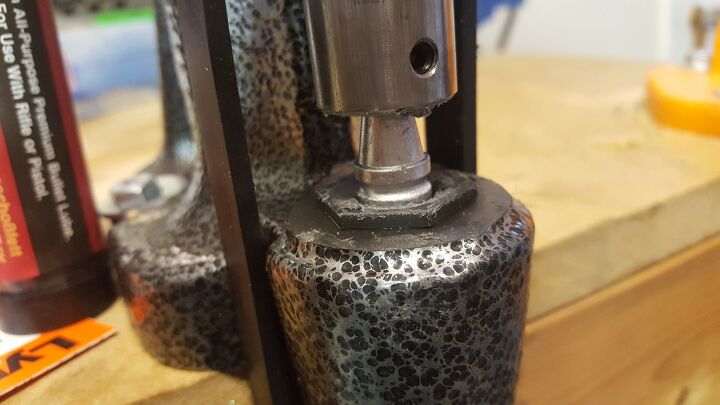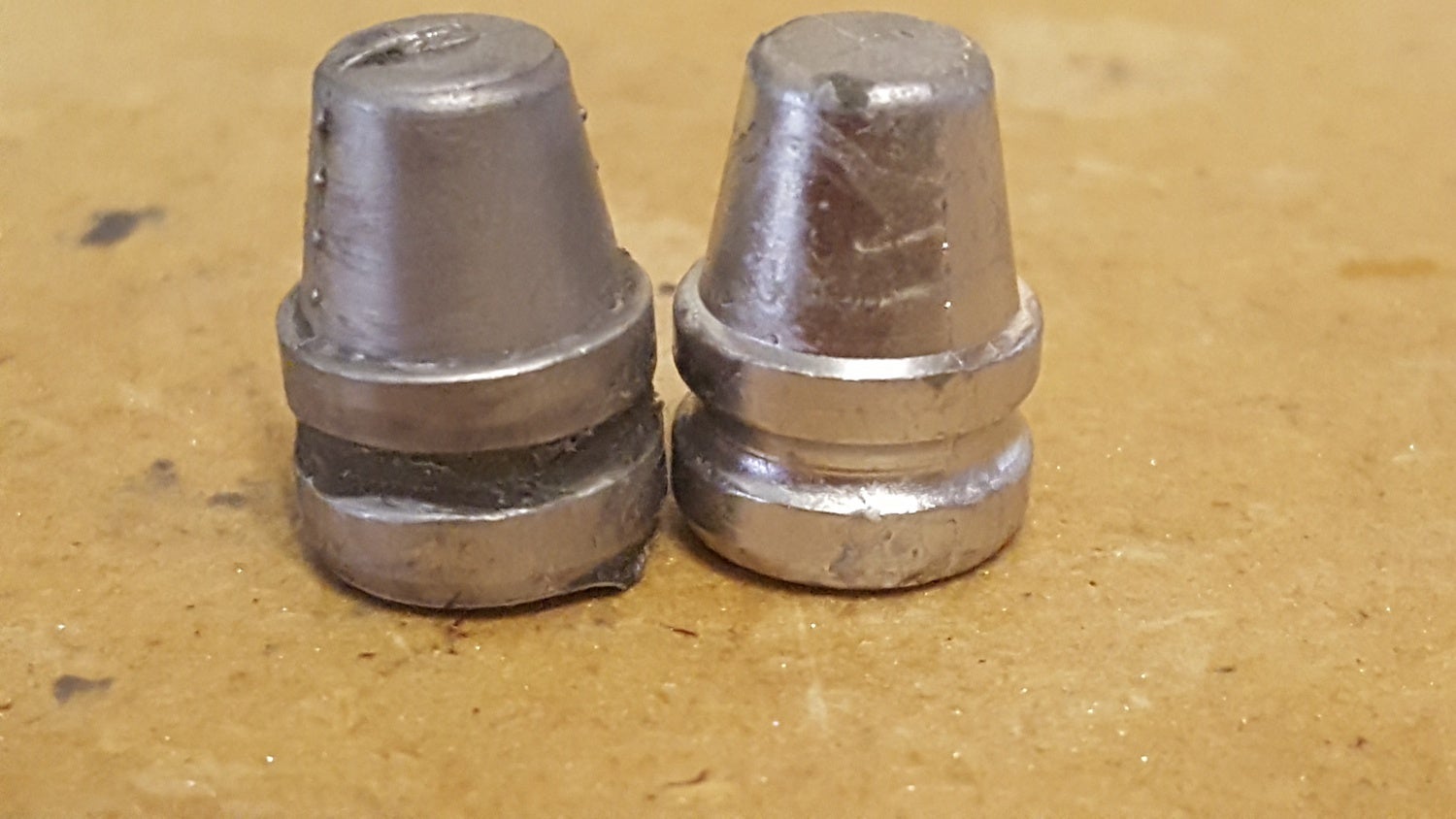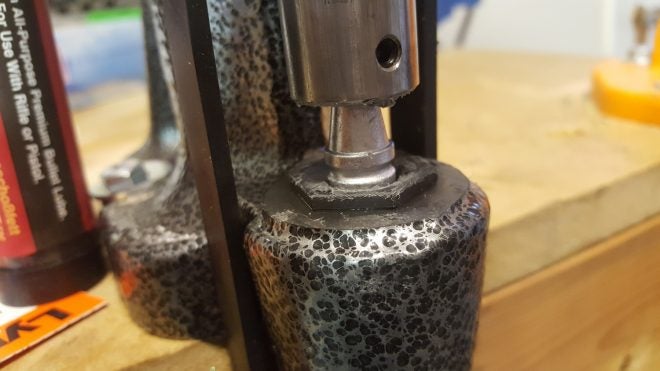Welcome to part 4 in the LYMAN and TFB series on casting bullets. For me, this series has been an adventure in the unknown. This experience has been both educational (and great) to this point. More on this in the conclusion.
You can find Part 1, the intro at https://www.thefirearmblog.com/blog/2018/08/22/bullet-casting-for-beginners/, Part 2, Processing the Lead at https://www.thefirearmblog.com/blog/2018/08/31/bullet-casting-for-beginners-part-2-leads-dead-baby-leads-dead/, and Part 3, Casting the Bullets at https://www.thefirearmblog.com/blog/2018/09/04/bullet-casting-for-beginners-part-3-its-alive/ At the end of Part 1, I list all of the equipment you should need to get started–it is repeated at the end here as well.
Too few people cast their bullets, as one commentator stated it really is becoming a lost art. The good news is that when the zombies do come, I will still be reloading. (except for the whole no more powder thing, primers replacement thing, brass replenishment thing, etc.).
So we have cast our wonderful pews, now let’s go dump powder and slide these bad boys into a casing. Easy “Killer”, we have more work to do. (Originally, I totally thought this, and was disappointed that I still had additional steps before I could go to the range).
GAS CHECK
The first issue is one of those subjects that is hotly debated. Gas check, or no gas check? A gas check is a small plate you attach to the base of the bullet. It strengthens the base of the bullet, being a harder base for the gases to push against. As the bullet travels down the barrel the gas check prevents strands of lead from being fused on the barrel wall; called “gas cutting”. It would appear, from a general consensus found on the interwebs (for what that is work), that slower bullets do not need a gas check, though using a gas check allegedly improves accuracy.
Honestly, there is just too much information out there arguing both sides. It does appear, from my highly accurate statistical analysis, that most people use gas checks. I will not be gas checking these .45 ACP rounds due to a “logistical error” on my part. How about you guys? Do you gas check? Our comment section will be a great place to reopen the debate…
SIZING
The next controversy, in the fine art of casting, revolves around sizing the bullet. My research indicates that it depends on that size bullet your mould produces. For a cast bullet, you want its diameter to be a scant .001 to .002 inches larger than a jacketed bullet. Large enough to get a tight seal in the barrel but still able to chamber. So we need to measure the diameter of the bullets we cast and compare it to a jacketed bullet. Also, too large a diameter in our cast bullet will bulge the casing when seating. Different sizing dies can produce a different diameter bullet. Some casters even go as far as to using a process called “slugging”. Slugging is the process of pushing a lead slug through a barrel, ensuring it gets the exact dimensions. As a casting noob, I am not going to do this. Master the basics first, then move on to the more advanced stuff.
Lubing
Fill your hand will a huge amount of lube, then….oops, wrong subject. Unless you are powder coating you should definitely lubricate the bullet. Unfortunately, this topic ALSO has people making arguments on both sides of the concept. As far as I am concerned, lubing is beneficial; if you want more reading you can peruse a great in-depth article here.
The lubricant is typically a wax base, and there are many options on the market. Some casters actually make their own lube. Simply, to lubricate the bullet, we want to fill the grooves in its body. With the LYMAN 4500 sizer & Lubricator, the bullet can be gas checked, sized and lubricated in a single pass which, for a casting noob really helps reduce some of the complexity. Once you get more advanced it is probably worth it to investigate some of the other tools.

A bullet about to be sized and lubricated. (and possibly destroyed by my learning curve).
When we have passed the bullet through the sizer die, the bullet is sized to the desired diameter, and the grooves in the bullet are filled with the waxy lubricant. Adjust the depth to the level you want so that the grooves are filled. This, of course, assumes you want all the grooves filled (again various schools of thought).
After each bullet is removed it is wise to remove any of the excess waxy lubricant off the bottom, since we do not want to introduce it into the chamber, and/or potentially contaminate the powder.

Left sized and lubed. Right: untouched pew
Conclusion
I need to honest with you here. My experience lubricating bullets has been a, shall we say an “excessive challenge”. That is why the article is light on the pictures, in both quantity and variety. I can not tell you how many bullets I destroyed by pressing them unevenly. Then on top of that mishap, even more bullets came out with uneven lubricant. Trust me, many foul words were spoken and had I included them here, this article would have been three times as long. The good news is a misshaped bullet is just melted back done for a do-over.
Needless to say, this has been my least favorite step in the whole casting process. I wish there was a relatively easy way to put a hard coating over the bullet and negate this lubricant. A way to just coat the bullet, size it and go pew. Oh wait, there is…
Next week we powder coat!
ADDENDUM: I was contacted this morning by the good people of LYMAN. Following reading the article they were concerned with my issue in sizing the bullets. From examining the pictures they were able to identify that I failed to place the punch in the ram. Total noob move! My apologies to all our readers, as well as Lyman. I will go eat crow now!
Items used in this series. At the very minimum, you need these things.
You may also want these items for safety:
We are committed to finding, researching, and recommending the best products. We earn commissions from purchases you make using the retail links in our product reviews. Learn more about how this works. Your Privacy Choices
Your Privacy Choices
